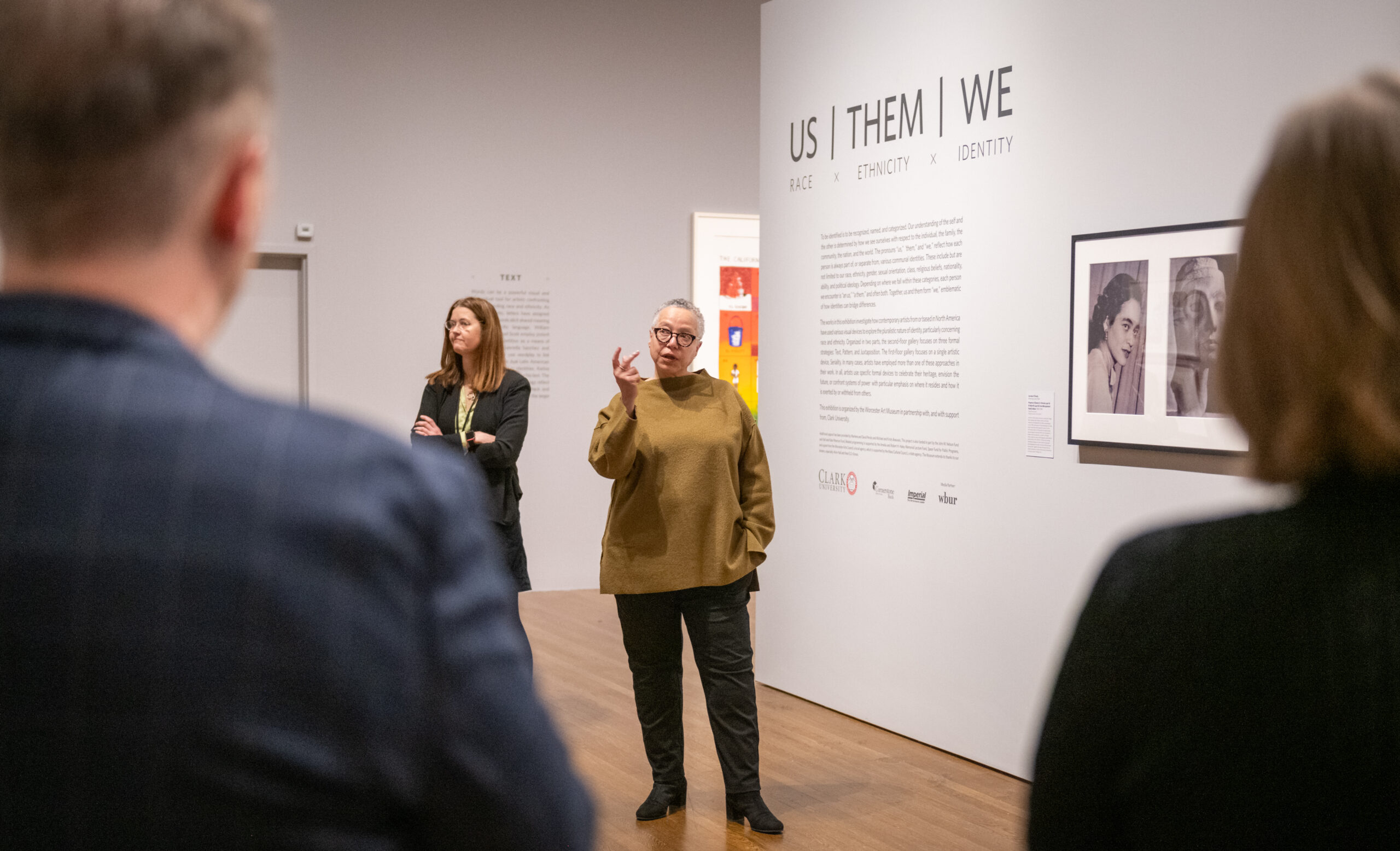Clark/Worcester Art Museum exhibition inspires revelations about identity

With just a few days left for the public to see the “Us Them We | Race Ethnicity Identity” exhibition at the Worcester Art Museum, Toby Sisson feels she’s met a personal goal. The Clark professor, program director of studio art, and co-curator of the exhibition wanted to show students that they can find a universal message in art despite differences in race, gender, or nationality.
“I’d always hoped that the students would see artwork created by a diverse number of artists who didn’t necessarily share their lived experience or their racial or ethnic identity and be able to identify with the ideas within that work,” she says. “This was a great opportunity for students to explore their own identity, and how that related to ideas expressed by people they thought were different from them, only to discover how much they had in common.”
“Us Them We” is a multi-layered exhibition that explores how contemporary artists since the mid-1970s have used devices like text, juxtaposition, pattern, and seriality to explore socio-political concepts in their work. Sisson and Nancy Burns, the Stoddard Associate Curator of Prints, Drawings, and Photographs at the Worcester Art Museum, co-curated the exhibition and collaborated on Sisson’s spring 2021 Contemporary Directions course.
As the students explored their concept of identity, Sisson had an epiphany.
“There’s an assumption that the way we solve problems, come to our ideas, or draw conclusions is probably similar for many people. But one of my revelations was that my students were forming their sense of self and identity in ways somewhat different than I did,” she says. “I learned to think more expansively about how people develop identity formation and how that can change and evolve over time.”
Sisson has led tours of the exhibition, has brought friends and colleagues to see the show, and has hosted online events. On June 16, she’s giving a presentation about the exhibition to the Clark University Black Alumni Association. The virtual event in celebration of Juneteenth is free to attend.
Exhibition viewers told Sisson they felt inspired to think about the intersections of race, gender, ethnicity, language, religion, and political perspectives.
“This gave the public an opportunity to think about different facets of themselves in ways that were enlightening and enriching,” Sisson says.
Pieces in the show are composed of items ranging from salvaged tools and synthetic hair to more common art materials like oils and photographs.
“The beauty of the exhibition itself was really important,” Sisson says. “I often tell my students that part of the objective of making artwork is to transform your materials. You want to create ideas that feel as if they’re greater than the sum of their parts.”
Anyone who visits the exhibition through Sunday can pick up a booklet that features a Q&A with Sisson and Burns, images of the student work, and an essay by Kimberly Juanita Brown, a Dartmouth College professor who researches connections between African American/African diaspora literature and visual culture studies. She gave a scholarly talk at the museum earlier this spring.
Sisson says the experience of “Us Them We” is something she’ll reflect on in future classes.
“I’m always interested in this intersection between my own creative research practice, public and community service, and teaching,” she says. “Whenever you can bring all that together, that’s a win.”


